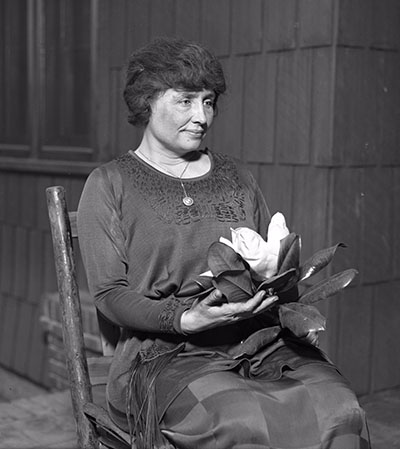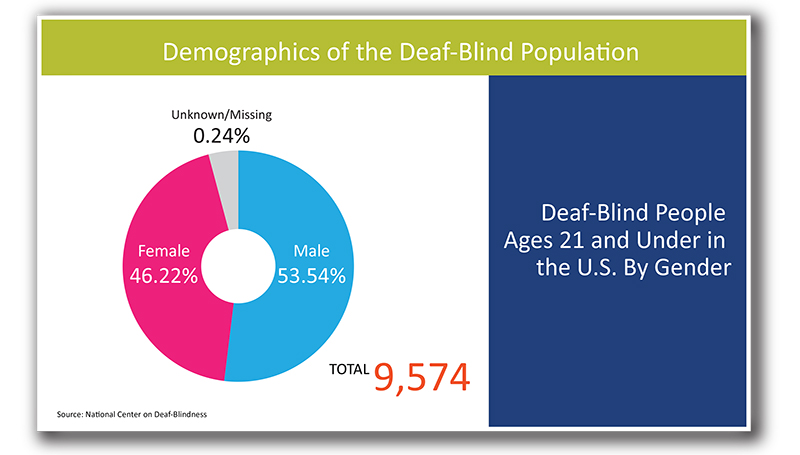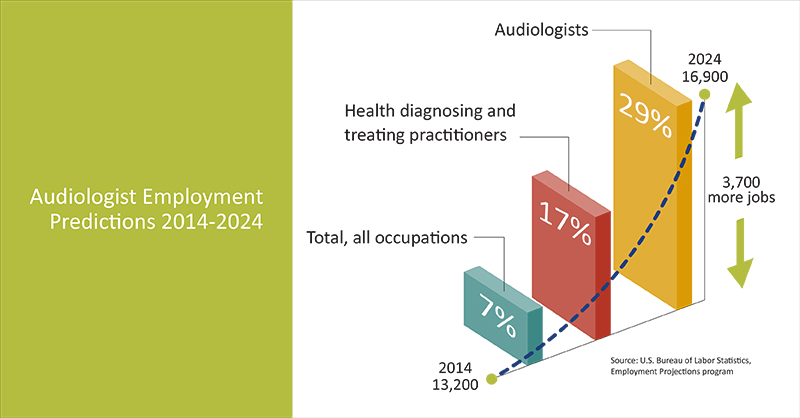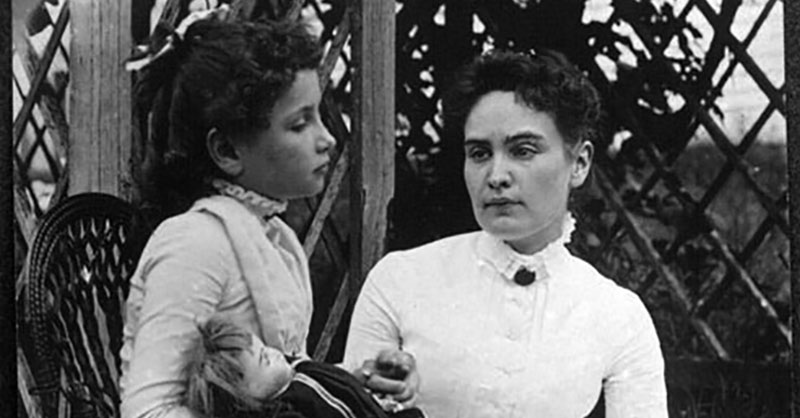Today, many children who are born deaf or blind have access to amazing support to help them navigate the world. Similarly, those who suffer loss of hearing or sight later in life have numerous resources to help them overcome communication barriers introduced by their new reality. It’s unlikely that those in this situation would be cut off completely from communicating with others. In the 1880s, Helen Keller wasn’t so fortunate. Despite all of the barriers that she faced because of her deafness, her blindness and her gender, she was able to do impressive work with Anne Sullivan to move care of the deaf-blind population forward.
Helen Keller: An Educator, Author and Activist to Remember

Most of us are introduced to Keller’s life and how Sullivan taught her to communicate early in life. What history often glosses over are the success and accomplishments that defined Keller even more than her deaf-blindness did. Keller had a desire for knowledge, and once she was able to start understanding sign language, her thirst for knowledge expanded. She attended a few schools specifically for the deaf, both in Boston and New York City. Keller worked for over 25 years to be able to communicate verbally so others could understand her.
After attending preparatory school in her quest for a college education, Keller met several influential people, including Mark Twain. Keller and Twain became friends and that relationship led to Keller attending Radcliff College. With Sullivan at her side, Keller became interested in social activism, specifically with the goal of working on the behalf of all those with disabilities. Topics Keller invested in included women’s suffrage, pacifism and birth control. She co-founded Helen Keller International in 1915 and was part of the founding team of the American Civil Liberties Union in 1920.
Keller wrote several articles about socialism after college, culminating in a series of essays, “Out of the Dark,” which discussed her view of world affairs and socialism. Her name appeared on the membership rolls of several organizations, including the American Federation for the Blind and the American Braille Press. At this point, Keller began to experience some negative attention and discrimination due to her disabilities.
The impact that Keller had on the blind-deaf community continues to be unparalleled. Through her 70s, Keller traveled the world motivating and inspiring others. Recognized frequently for her achievements, the respect she earned can prove to be quite motivational.
Helen Keller Deaf-Blind Awareness Week
The Helen Keller National Center for Deaf-Blind Youths and Adults, together with the National Family Association for Deaf-Blind, celebrate Keller’s accomplishments and contributions to the community each year in late June. The last week of the month, which coincides with Keller’s birthday, is used to bring awareness to the deaf-blind community.
The National Family Association for Deaf-Blind
The National Family Association for Deaf-Blind (NFADB) works with families who have a loved one who is deaf and blind. They strive to ensure these individuals have the same opportunities as everyone else. They are huge proponents of education, support and connecting families to others like them based on their needs and interests. They also advise professionals and provide training for those who will work with deaf-blind individuals.

NFADB helps families find the best services for their loved ones and strives to use Helen Keller Deaf-Blind Awareness Week to increase awareness and support. One way that they work towards this mission is by highlighting families on their website so that others in a similar position know they’re not alone. One such story highlights the successes of Billy Pickens, III:
“William (Billy) M. Pickens, III, is a typical 18 year old. He loves to write, talk and listen to music and sports. He is enrolled as a freshman at University of North Carolina-Charlotte as a communications major. He aspires to be a radio broadcaster and writer after graduation. Oh, and Billy happens to be deaf-blind as a result of Norrie’s Disease. He was born totally blind with a progressive hearing loss.”
The Helen Keller Services
The Helen Keller Services (HKS), which includes the Helen Keller National Center for Deaf-Blind Youths & Adults (HKNC) and the Helen Keller Services for the Blind (HKSB), strives to enable deaf-blind, blind and those who may have combined hearing and vision loss to “live, work and thrive in the communities of their choice.”
HKS has been helping people, both within the New York City area and well beyond, since 1893. They provide help with technology, hands-on learning and interaction, connecting those who have overcome similar obstacles with those who are just beginning their journey.

One such example includes Marissa Gold, who lost her hearing and vision after a virus attacked her body in 2012. She shares some of her story on the HKNC website:
“Life handed me a triple slap — one that I could barely comprehend — when I was neatly placed in the category of deaf-blind, which is really more of a broad spectrum definition in two words, than a single grouping of people with dual sensory loss,” she says. “A friend had told me early on that someday I would return to the field of school counseling, and I cannot say that I believed this for a second. But that changed after I came to HKNC. My concept of the possibilities began to widen and become infinite.”
Helen Keller Deaf-Blind Awareness Week Events
In 1984, President Ronald Reagan designated the last week of June as Helen Keller Deaf-Blind Awareness Week. Each year the celebrations extend around the world, including national and state campaigns in the U.S. In 2017, the week of June 25th through July 1st focuses on the power of touch. “The best connection will always be the human connection,” their website states. One of the goals is to learn from the deaf-blind community and build reality-based relationships.
As part of the week’s events, the NFADB and HKNC are presenting an interactive experience. The Deaf-Blind Experience is designed to be both social and educational. The evening will include both networking opportunities and learning sessions. The activities give participants an opportunity to experience life without hearing or seeing, including:
- Wine tasting using sleep shades.
- A demonstration of sign language and touch signals.
- Hands-on exploration of devices used by deaf-blind persons.
The Alabama Initiative for Children and Youth who are Deaf-Blind is hosting a weekend of events titled Race for the Dream: We are Limitless. Throughout this weekend, young adults will be given tools to empower them and encourage them to get excited about furthering their education. They’ll experience a bit of what college life is like by staying in the dorm, eating in a dining hall, meeting in campus facilities and even participating in activities with others from around the region.
Throughout the weekend, successful deaf-blind young adults will present on topics like leadership, networking and mentors. There will also be an opportunity for the parents and caregivers to help their family members prepare for the transition from school to work or college.
Deaf-Blind Students in Health Care Education
The health care industry has room for everyone, especially those who have overcome hearing and vision obstacles. Diversity in health care is incredibly important as providers are treating more diverse populations each and every year.
Colleges who are embracing diverse populations, including those with disabilities, are helping to better prepare students for their careers. Colleges are learning from their mistakes, and these practices can easily be expanded to other areas, including retail, K-12 education and local government. For instance, some accessibility-focused institutions are:
- Establishing accessibility liaison programs (like the one at Ohio University) to include multiple cultures through communication.
- Ensuring students that may have mobility challenges are able to access housing, employment and other campus resources, like the Student Disability Resource Center at Georgia Southern.
- Pledging to make digital content more accessible, like both Cornell and the University of Cincinnati are doing.
The Hadley Institute for the Blind and Visually Impaired considers the needs of their students with disabilities first. In fact, they designed their own learning management system to serve the needs of their students. For an institution that provides free courses to the legally blind and their family members, they are able to offer traditional courses and online, distance education courses. Hadley hires blind instructors to teach students how to navigate modern technology. With free screen reading programs available, blind students can spend their money on their education instead of on assistive technology.
How to Make a Difference in the Deaf-Blind Community
Those moved to work with deaf, blind or deaf and blind patients have several great career options. From providing speech therapy to helping prevent loss of sight, there is something for everyone interested in getting involved in this career field.
Speech and Language
As a speech-language pathologist, you’ll have the opportunity to further study human communication and the problems that others may have with it. When working with patients of all ages, speech-language pathologists usually work as part of a team, which can include educators, physicians, audiologists, psychologists and social workers.
Speech-language pathologists are passionate about their work, and they love their patients. They often boast about the great things their profession has to offer, such as a variety of work settings, working with diverse clients and the ability to be self-employed. The learning never ends in the speech-language and human communication fields, and it’s fun to keep up to date on best practices, attend conferences and learn about new treatment methods. Specialization is available in this field, though it is not required. Some speech-language pathologists choose to work solely with children or adults, and others like working with all ages.
Auditory Care
Audiologists evaluate hearing, prepare patients for hearing loss and assist with hearing aids. Listening devices are very helpful for deaf-blind patients as they often rely on residual hearing for travel, safety cues and communication.
Hearing loss prevention is a key focus of audiologists. There are several ways that everyday life can contribute to hearing loss, and for those who may be experiencing vision loss or are blind, hearing becomes even more important.
Audiologists have very diverse career path options, and frequently patients are surprised to discover the things that audiologists can help with. Here are a few interesting facts about audiologists and audiology:
- They have specialties ranging from pediatrics to tinnitus.
- They go to school for eight years, and are actually called doctors of audiology.
- Audiology is a pretty new field — it began in 1946 when service men returned from World War II with damaged hearing.
- They love research and preventative care, which helps patients immensely.

Vision Care
Eye care is not just for the seeing, and is extremely crucial for deaf patients, and particularly children. There are several careers that work with vision correction and repair. When thinking of health care providers that work in the vision field, optometrists, or doctors of optometry, are often the first to come to mind. It’s a very popular job, combining new technologies, research, regular hours and most importantly, the reward of helping people see better.
Sometimes patients confuse an optician or ophthalmologist with an optometrist. Dispensing opticians fit patients for glasses and/or contact lenses, following the prescriptions written by ophthalmologists or optometrists. Ophthalmologists are physicians who perform eye surgery and can diagnose and treat eye conditions.
Ophthalmic medical technicians and ophthalmic lab technicians are two other options in the health care field that work with vision. Lab technicians make prescription glasses and contact lenses while medical technicians work with an ophthalmologist to provide patient care. Some of the tasks they may perform include taking medical histories, performing vision and diagnostic tests and coordinating patient scheduling.
Bringing it All Together
Helen Keller and Anne Sullivan would likely be impressed by the progress that has been made in the hearing and vision fields. Their dedication to studying and improving human communication has pushed the medical community, the government and the public to accept and assimilate deaf-blind persons into community. There is still work to be done, and as a health care practitioner, you can help continue to innovate the care that those with hearing or sight loss receive.

